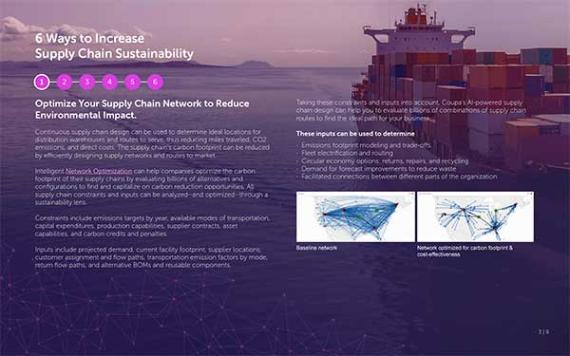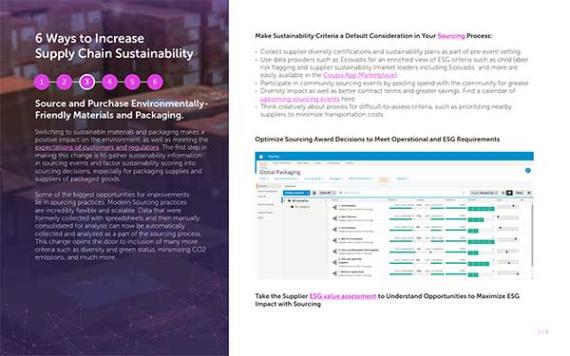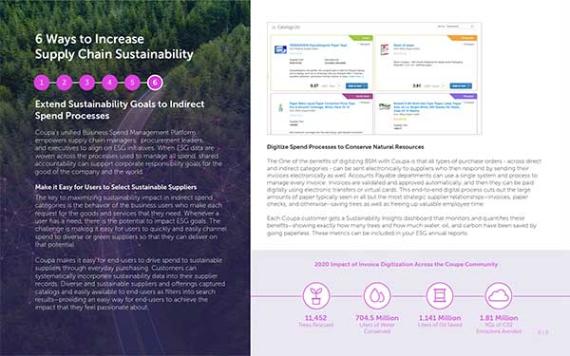6 Ways to Increase Supply Chain Sustainability
Download this guide for details on six best practices recommended by experts to boost the sustainability of your supply chain. These practices include optimizing your supply chain network to reduce its impact on the environment, creating a circular economy to reduce waste going into landfills, sourcing and purchasing environmentally-friendly materials and packaging, and more.
A guide for companies seeking to reduce the environmental impact of their supply chain
This e-book will cover 6 ways that companies can incorporate sustainability into their Business Spend Management practices including:
- Optimizing the supply chain
- Creating a circular supply chain
- Sourcing governance
- Inventory management
- Procurement & more.
Did you know that a company’s supply chain emissions are on average 5.5 times higher than a corporation’s direct emissions?
Companies today are being held accountable for more than just financial success. Business leaders are pushed to show real impact and deliver on ESG commitments too. Neglecting sustainability can lead to higher employee turnover, customer pushback, damage to the brand, and fines from regulators. To fully manage the total environmental impact of their businesses, companies must manage and reduce the impact not only of their direct operations but also that of all of their suppliers and those suppliers’ suppliers. Learn how to reduce the environmental impact of your supply chain by downloading this guide today.
FAQ



